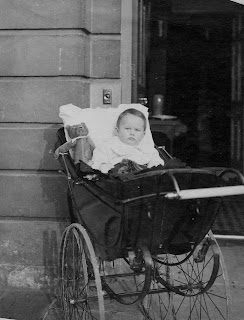Two conversations yesterday evening prompt me to post on this theme.
A while back, cycling to work up Recreation Road in Norwich, I encountered a kind of mayhem even more extreme than the usual mayhem caused by people bringing their children to school at Heigham Park First School. Recreation Road is a steep hill, bottom gear variety. On this particular occasion I was struggling up this hill on my bicycle, but was brought to a halt due to the car in front of me having to stop. That was because a car coming down the hill had pulled up to stop and unload children where there were already parked cars on both sides, entrances to drive ways and other complications, in such a way as to prevent anyone from moving up or down the hill.
Stopping a cyclist on a steep hill is not popular.
They say that whenever a cyclist is forced to stop and start off again it takes as much additional energy as if the journey were 100 metres longer, but that's presumably if you have to restart on the flat; I suspect that restarting on an up hill slope is quite a lot more.
In this case it wasn't just a matter of starting again. There wasn't actually room for me to continue my journey on the road. In fact I had to get off, walk my bike up the pavement, and get on again beyond the obstruction.
As I went past the mother unloading her child from the car, I asked her, in a rhetorical kind of way, why she didn't bring her children to school on foot. It's always struck me (on the times when I make the mistake of riding past that school at that time of the day) that the ones being unloaded from cars look fat and unhappy, while the ones being walked to school are chatty and lively with a lovely hubbub of conversation with their accompanying adult.
The mother with the badly parked car didn't offer me a reason for why she didn't bring her children on foot. She just said "you've obviously never had children!" as though it was obvious that if you had children you had to be late, in a hurry, shove them in a car, drive to school, yank them out of the car, drag them in to the school door and rush back to move the car, because it's causing an obstruction. No time for goodbyes. No time for conversation. No time to talk to the other parents. Just dump them and run. This is what bringing up children is all about.
Well, perhaps it was a bad day. But if you don't have a car at all, a bad day never looks like
that. It may look like something else, but it never looks like that.
"Actually," I said, "I had two children, and we never had a car." By this time I was on my bike and gone. "Never once," I thought, "did my children go to school by car." In fact, of course, they never went to ballet by car, they never went to music lesson by car, they never went to orchestra by car.
Was anyone the worse off for that? Well, our life was not the life of a taxi driver, which seems to be what the life of many parents is these days. And their life was, as far as one can make out, certainly not worse for it. Perhaps, dare I say it, better? Some thoughts on why in due course.
 I think nowadays people sometimes use one of those trailers that goes behind a bicycle and maybe you can put the baby to lie down in it, or put a car-seat type baby carrier in it.
I think nowadays people sometimes use one of those trailers that goes behind a bicycle and maybe you can put the baby to lie down in it, or put a car-seat type baby carrier in it.











